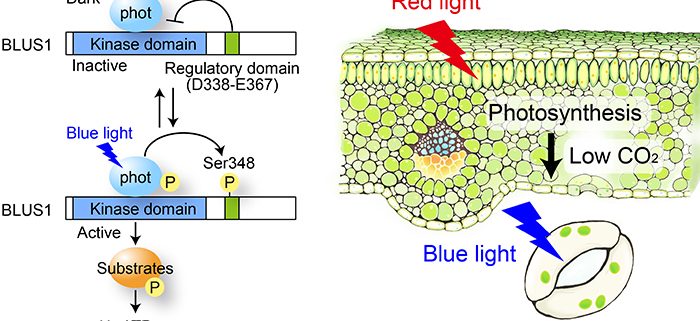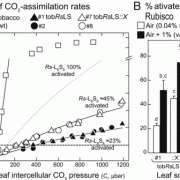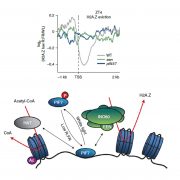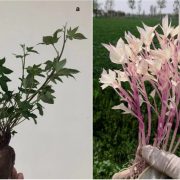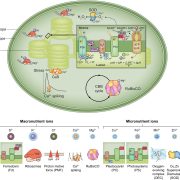How Blue and Red Light Synergistically Drive Stomatal Opening
by Sakurako Hosotani and Atsushi Takemiya (Yamaguchi University)
Background: Opening of stomatal pores is essential for photosynthetic CO2 fixation and transpiration in terrestrial plants. Light-induced stomatal opening includes two mechanisms: the blue light-specific response, which operates through phototropin receptor kinases, and the red light-induced response, which relies on photosynthesis. The stomatal response to blue light is enhanced under a strong red light background, and simultaneous irradiation with blue and red light induces larger stomatal opening compared with that under irradiation with monochromatic blue or red light. Blue light-dependent stomatal opening is initiated by light perception of phototropins, and light-activated phototropins phosphorylate their substrate BLUE LIGHT SIGNALING 1 (BLUS1) kinase in guard cells. Phototropin-dependent BLUS1 phosphorylation is essential for the activation of plasma membrane H+-ATPase and stomatal opening.
Question: BLUS1 phosphorylation is essential for stomatal opening, but it remains unclear how this phosphorylation affects BLUS1 function and blue light signaling. It is also unclear how blue and red light synergistically drive stomatal opening.
Findings: We generated transgenic Arabidopsis plants expressing different truncated and phospho-mimic variants of BLUS1 in the blus1 mutant background. We found that the BLUS1 C-terminal region serves as a regulatory domain for its kinase activity, and that phototropin-mediated phosphorylation of Ser-348 located within the regulatory domain is required for the release of autoinhibition. Furthermore, using constitutive signaling variants of BLUS1, we showed that the activation of H+-ATPase alone is insufficient for stomatal opening, and that a simultaneous decrease in intercellular CO2 concentration (Ci) via red light-driven photosynthesis is required for this process. Moreover, functional analyses of these BLUS1 variants showed an unexpected negative regulation of stomatal opening through blue light-dependent dephosphorylation of H+-ATPase. Consequently, these molecular mechanisms allow the fine control of stomatal opening under light conditions.
Next steps: Future research should address the molecular mechanisms underlying the coordinated control of stomatal opening by blue and red light, i.e., BLUS1-mediated H+-ATPase activation, low Ci-induced anion channel inactivation, and phototropin-mediated H+-ATPase dephosphorylation.
Sakurako Hosotani, Shota Yamauchi, Haruki Kobayashi, Saashia Fuji, Shigekazu Koya, Ken-ichiro Shimazaki, Atsushi Takemiya. (2021). A BLUS1 kinase signal and a decrease in intercellular CO2 concentration are necessary for stomatal opening in response to blue light. Plant Cell.


